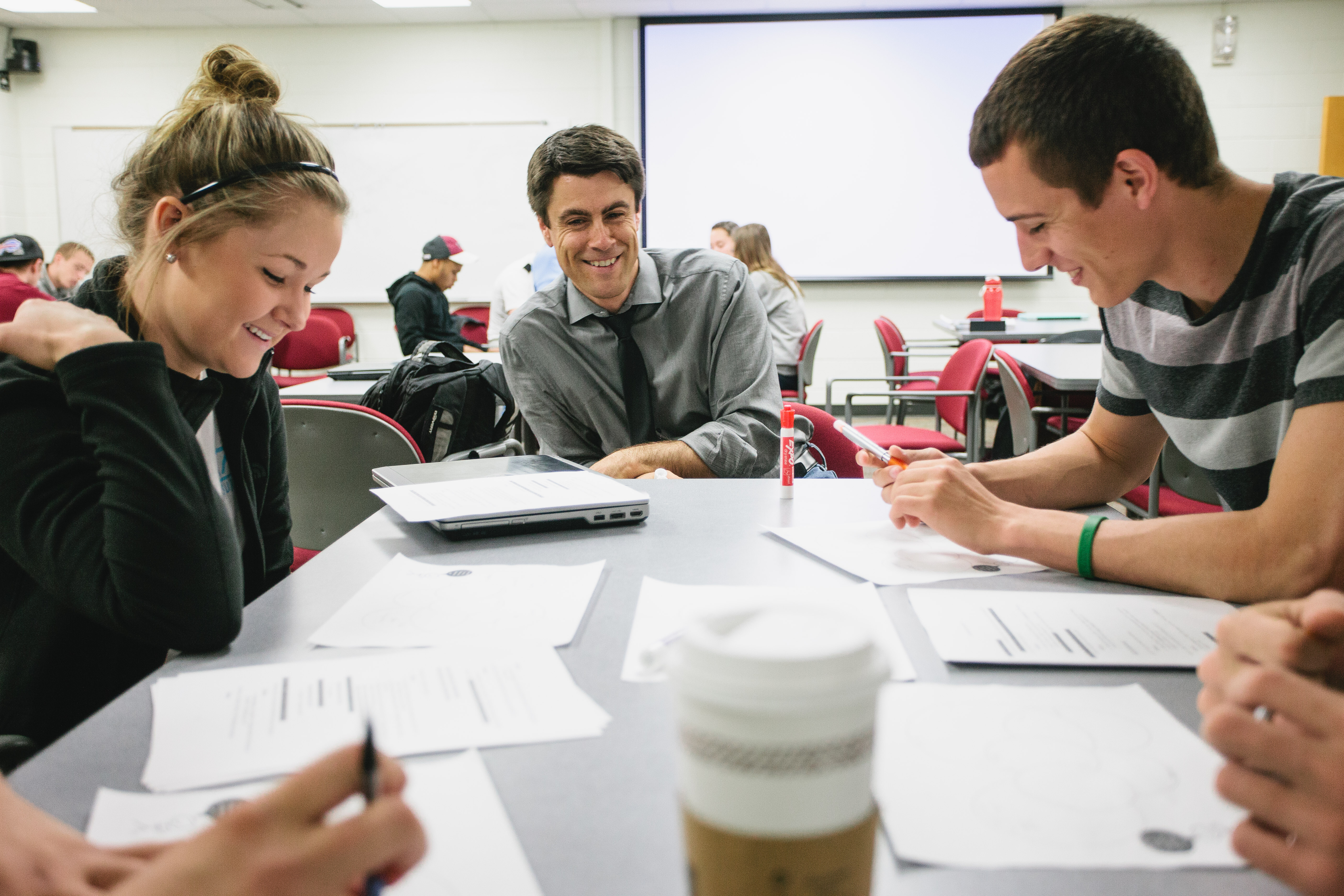New approach to student projects promotes passion, learning for its own sake

For two years, a Virginia Tech faculty member has instructed his students to “skip class, do anything you want, and give yourself a grade.” The strategy, it turns out, promotes course engagement and learning.
“In our education system, grades are a primary motivation for learning, which ultimately kills passion and undermines learning,” said Tim Baird, assistant professor of geography in the College of Natural Resources and Environment.
Taking a lesson from “Drive,” Daniel Pink’s book about motivation, Baird told the students in his second-semester sustainability course to go learn about something that fired them up, present the project to the class, and then tell him how well they think they learned about their chosen topic. He called the exercise “Pink Time.”
To minimize any confusion, Baird demonstrated an activity — outlining the major characters, themes, and plot lines for three seasons of a dramatic TV show about an American university — and then presented his activity to the class. The students also learned about Pink and his reporting on research in social and behavioral economics.
“Students pursued an incredible diversity of activities,” Baird said in an article in the Dec. 2, 2014, issue of the Journal of Geography. “We view this as a strong indicator of success, especially in a sustainability course.
“They brought their passions into the classroom and imbued them with lessons from the course. They are thinking more critically about assessment and recognize that learning takes place all the time.”
Examples of Pink Time projects included interviewing a professor about life in Appalachia, making cross-country skis from wood, mapping the social networks for “The Walking Dead” television show, developing a mobile phone app to reduce waiting times at campus food vendors, conducting a small social experiment on kindness, and redesigning a double-action valve pump.
The project exercises took place three times during the semester. David Kniola, assistant director of the Office of Assessment and Evaluation, who created the research design, and Ashley Lewis of Blacksburg, Virginia, a geography master’s student, joined Baird in analyzing the results. They assessed the projects based on choice, complexity, effort, persistence, and curiosity and created three categories of students’ learning: developing, competent, and exemplary.
“Before the students began their Pink Time assignment, we took a draft assessment tool to the students and incorporated their feedback into the final tool. In this way, the tool was co-designed with students,” Baird said.
By the third Pink Time exercise, 84 percent of students reported that they were doing complex projects and 79 percent reported exhibiting exemplary curiosity.
“A key here is that they were assessing themselves. This isn’t an objective measure — it’s their own assessment of themselves,” Baird said. “Students pursued their interests by spending more time on them and learning about them in increasingly diverse and integrative ways.”
One student chose learning how to tie a bow tie as his first project, but by his third project had designed a study about student motivation after observing students in other classes not paying attention — for example, checking email instead. He later pursued a work experience in the university's assessment and evaluation office.
Kniola, who also carried out Pink Time studies in one of his graduate classes, interviewed seven of Baird’s students at the end of the semester. The interviews revealed that students were making connections across courses and were thinking about the applications of course content.
“Another important theme in students’ responses was engagement, such as teaching and learning from other students,” said Shelli Fowler, senior director of the university’s Networked Pedagogies in Technology-enhanced Learning and Online Strategies, who consulted on the project throughout and assisted with the final drafts of the article manuscript.
“There was an increased sense among the students that they were responsible for their learning and that learning occurs everywhere,” Baird said.
The sustainability course was structured, with a great deal of content and a detailed syllabus, “but students need to move beyond being told what to learn,” he added.
The diversity of projects is one measure of the assignment’s success.
“Generally, students come to these courses with the notion that sustainability involves recycling, conservation, green energy, and little else,” Baird explained. “The aim is to show that these things are connected to many other things, including values, language, diversity, justice, evolution, marketing, history, politics, and philosophy. An informed approach to sustainability seeks to integrate concerns for environmental health, social justice, and economic development.
“Self-regulated learning is an effective way to harness students’ interests and sense of themselves, and to place them within the purview of a course in a way that promotes engagement, critical thinking, and a more tightly held and personal value for education,” he concluded.




